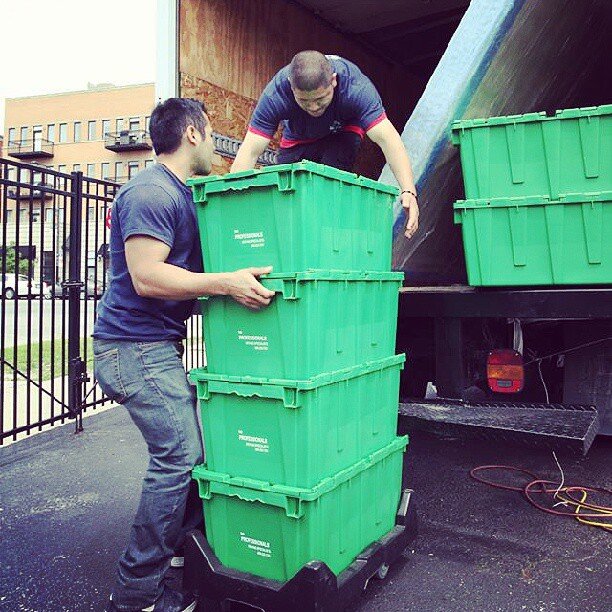How the Circular Economy Is Changing the Moving Industry
How to Plan a Zero-Waste Move
Moving to a new home is exciting, but it’s also one of the most wasteful processes most people go through. Between piles of cardboard boxes, plastic wrap, and unwanted items, a typical move can generate a surprising amount of trash. Fortunately, with a little planning and the right approach, it’s entirely possible to move without leaving a trail of waste behind.
A zero-waste move not only helps the environment but also makes the process more organized and cost-effective. Here’s how to plan a move that’s efficient, eco-friendly, and completely free of unnecessary waste.
Start by Decluttering Responsibly
Before packing a single box, take time to declutter your home. The less you have to move, the easier it is to stay organized and reduce waste. Go room by room and separate your belongings into categories: keep, donate, sell, and recycle.
Items in good condition can be donated to local charities, shelters, or community organizations. You can also host a garage sale or use online marketplaces to give your belongings a second life. For anything that’s broken or unusable, check local recycling programs for proper disposal options. Many cities offer recycling services for electronics, textiles, and household goods.
By decluttering responsibly, you’ll minimize what you need to pack and ensure that fewer items end up in landfills.
Choose Reusable Moving Boxes
One of the biggest sources of waste during a move comes from cardboard boxes. While recyclable, cardboard often ends up damaged, contaminated, or discarded after a single use. Instead of relying on disposable boxes, choose reusable moving containers.
Durable plastic moving boxes, like those offered by The Chicago Green Box, are a sustainable alternative that can be used again and again. They’re sturdy, stackable, and easy to transport, eliminating the need for tape and excess packing materials. Plus, they’re delivered directly to your door and picked up after your move, making the process simple and waste-free.
Use Eco-Friendly Packing Materials
Traditional packing supplies like bubble wrap and foam peanuts are difficult to recycle and often end up in the trash. Fortunately, there are plenty of eco-friendly alternatives. Use what you already have—towels, blankets, and clothing make excellent padding for fragile items. You can also use shredded paper, biodegradable packing peanuts, or recycled packing paper for extra protection.
If you do need to purchase packing materials, look for recyclable or compostable options. After your move, save and reuse these materials for future use or donate them to someone else who’s moving.
Plan Efficient Transportation
Reducing waste isn’t just about materials—it’s also about minimizing your carbon footprint. Plan your move strategically to reduce the number of trips you need to make. If you’re hiring a moving company, choose one that uses fuel-efficient vehicles or offers carbon offset programs.
For local moves, consider scheduling during off-peak traffic hours to avoid unnecessary idling and fuel consumption. If you’re moving long-distance, try to consolidate your belongings into a single trip and avoid shipping items separately when possible.
Set Up a Sustainable New Home
Once you’ve arrived at your new place, keep the zero-waste mindset going. Unpack carefully and reuse your packing materials for storage or future moves. Recycle anything that can’t be reused, and donate leftover supplies to others who may need them.
As you settle in, set up systems that make sustainable living easy—like composting bins, recycling stations, and energy-efficient appliances. Moving is the perfect opportunity to start fresh with greener habits.
Make It a Community Effort
Zero-waste moving doesn’t have to be a solo effort. Encourage friends, family, and neighbors to adopt sustainable moving practices too. Share your reusable boxes, lend packing materials, or trade supplies to reduce waste collectively.
By spreading awareness and leading by example, you can help make eco-friendly moving the new standard in your community.
Moving Toward a Greener Future
A zero-waste move takes a little extra planning, but the benefits are worth it. You’ll save money, reduce clutter, and protect the environment—all while making your move smoother and more efficient.
At The Chicago Green Box, we believe that moving doesn’t have to come at the planet’s expense. With reusable boxes and smart planning, you can make your next move truly sustainable—one box at a time.
Best Local Donation & Recycling Centers in Chicago for Movers
How to Donate, Sell, & Recycle Unwanted Items
One of the best parts of moving is the opportunity to declutter. As you pack, you’ll likely come across items you no longer need—clothes that don’t fit, furniture that won’t work in your new space, or gadgets collecting dust. Instead of tossing everything in the trash, you can give your belongings a second life through donation, resale, or recycling.
Eco-Friendly Packing Hacks Using Items You Already Own
The ROI of Sustainable Moving: Environmental & Cost Benefits
Reusable Movers Crates vs. Cardboard: Safety, Durability, User Reviews
When planning a move, one of the first decisions you’ll face is what kind of boxes to use. For decades, cardboard has been the go-to choice. But today, more and more people are turning to reusable movers crates—like the durable green boxes we provide at The Chicago Green Box—as a smarter, safer, and more sustainable alternative.






